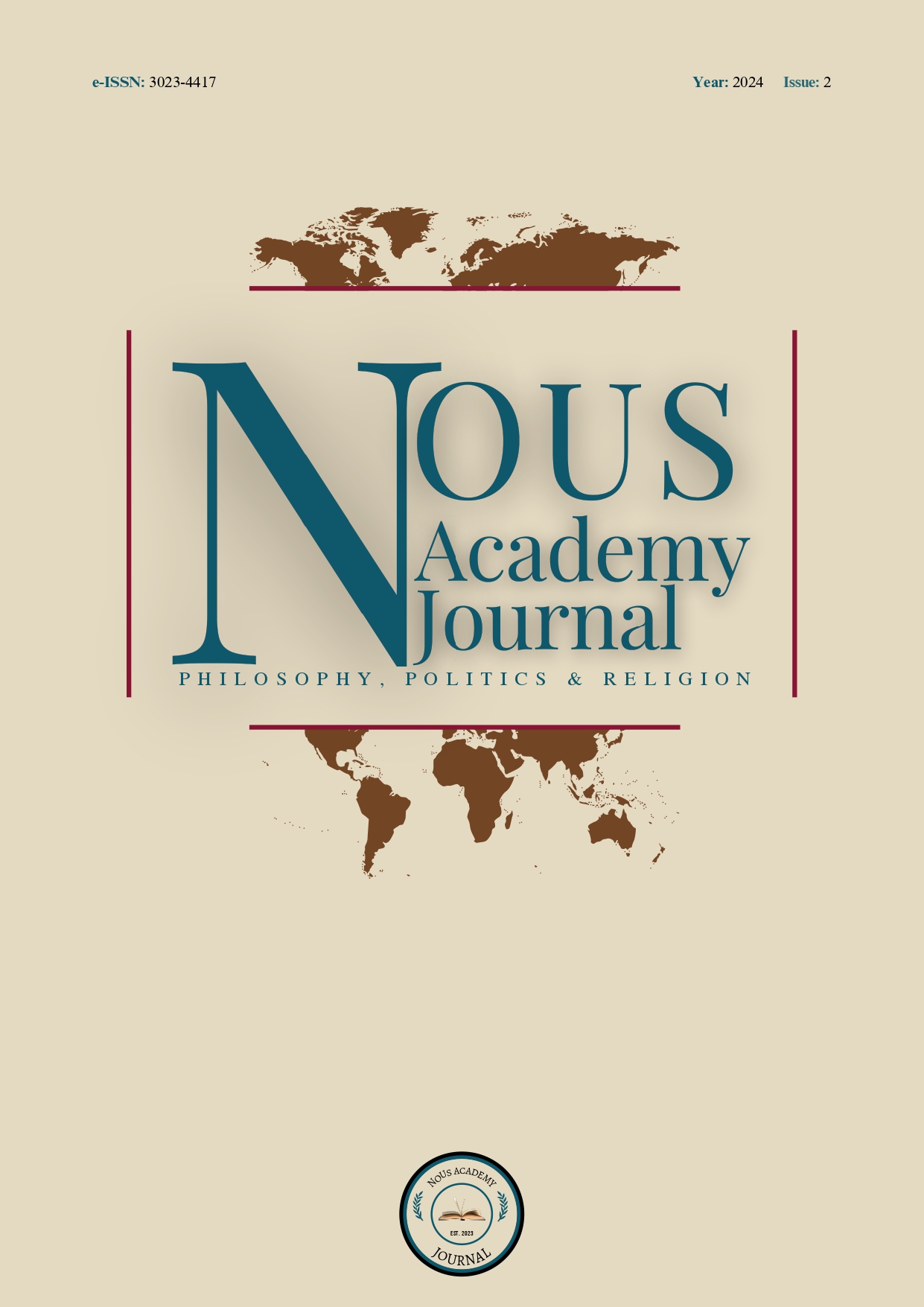A New Viewpoint on the Nature of Money Based on the Theory of Social Capital in Islamic Thought
DOI:
https://doi.org/10.5281/zenodo.10977235Keywords:
Monetary Economics, The Nature of Money, Credit Money, Social Capital, Monetary GovernanceAbstract
The purpose of this paper is to provide a new understanding of the nature of money. It aims to analyze the credit behind money based on Islamic thought and to explain the real truth behind the formation of money. It also aims to study conventional issues arising from money creation and propose solutions by introducing a new view on the nature of money to help governance of the monetary system. Also this paper uses a qualitative method by analyzing relevant studies and literature about money to understand the nature of money and Shariah-related issues. The paper finds that the real truth behind money is social capital. This social capital comes from the trust and confidence of people in the government, and it can be accumulated and stored. This paper provides a new viewpoint on money and considers it as a social institution and public property, which means its management is in the hands of the government so it can create money for society's interests. The paper provides a new understanding of money based on Islamic thought, which can be useful in monetary governance and shariah compliance with money creation.
References
Alan, B. S. “Central Bank Credibility: Why Do We Care? How Do We Build It?”. National Bureau of Economic Research (1999), 1-23.
Anikin, A. A Science in Its Youth: Pre-Marxian Political Economy. New York: International Publishers, 1979.
Birou, A. “Vocabulaire Pratique des Sciences Sociales”. Czech Sociological Review (1968).
Bourdieu, P., Chamboredon, J.-C., & Passeron, J.-C., The Craft of Sociology: Spistemological Preliminaries. Berlin: de Gruyter, 2011.
Coleman, J. S. “Social Capital in the Creation of Human Capital”. American Journal of Sociology (1988), 95-120.
Davies, G. History of Money. Cardif: University of Wales Press, 2010.
Douglas, A. X. The Philosophy of Debt. London and New York: Routledge, 2016.
Dowd, K., Hutchinson, M., & Kerr, G., “The Coming Fiat Money Cataclysm And The Case For Gold”. Cato Journal 32 (2012), 363-388.
Fisher, I. The Purchasing Power of Money: Its Determination and Relation to Credit, Interest and Crises. New York: Macmillan, 1911.
Fukuyama, F. “Social Capital and Civil Society”. International Monetary Fund (2000).
Fukuyama, F. “Social Capital and Development: The Coming Agenda”. SAIS Review (2002), 23-37.
Gilbert, E. “Ornamenting the Facade of Hell: Iconographies of 19th-Century Canadian Paper Money”. Environment and Planning D: Society and Space 16 (1998), 57-80.
Goodhart, A. C. “The Two Concepts of Money: Implications for the Analysis of Optimal Currency Areas”. European Journal of Political Economy (1998).
Goodhart, C. Money, Information and Uncertainty. London: Macmillan, 2nd edition, 1989.
Graziani, A. The Monetary Theory of Production. New York: Cambridge University Press, 2003.
Harris, L. Monetary Theory. New York: McGraw-Hill, 1981.
Hicks, J. Critical Essays in Monetary Theory. London: Clarendon Press, 1967.
Ingham, J. The Nature of Money. Cambridge: Polity Press, 2004.
Jakab, Z., & Kumhof, M. “Banks are not Intermediaries of Loanable Funds and Why This Matters”. Working Paper, Bank of England, London, No.529, 29 May 2015.
King, M. “Speech given by Governor of the Bank of England to the South Wales Chamber of Commerce”, 2012.
Knapp, G. The State Theory of Money. London: Macmillan, 1924.
Lin, N., Cook, K., & Burt, R. S. Social Capital: Theory and Research. New York: Aldine de Gruyter, 2001.
Lindner, F, “Does Saving Increase the Supply of Credit? A Critique of Loanable Funds Theory”. World Economic Review (2015).
Marx, K. Capital: A Critique of Political Economy - The Process of Circulation of Capital. Vol. ll.
(F. Engels, Ed. & E. Untermann, Trans.). Chicago: Charles H. Kerr and Company, 1988.
Masgrave, R. Chartalism – and Why Money Has Value. Durham, 2009.
McLeay, M., Radia, A. & Thomas, R. “Money Creation in the Modern Economy”. Bank of England (2014), 14-27.
Mosler, W. “Soft Currency Economics”. http://moslereconomics.com/mandatory – readings, soft – currency – economics, 2010.
Nishibe, M. The Enigma of Money, Gold, Central Banknotes, and Bitcoin. Springer, 2014.
Portes, A. “The Two Meanings of Social Capital”. Sociological Forum (2000), 1–12.
Ricardo, D. On the Principles of Political Economy and Taxation. 3d ed, Vol. 1. Ed. P. Sraffa. London: Cambridge: University Press for the Royal Economic, 1951.
Robinson, D. & Williams, T. “Social Capital and Voluntary Activity: Giving and Sharing in Maori and Non-Maori Society”. Social Policy Journal of New Zealand (2001), 52-71.
Rossi, S. Money and Payments in Theory and Practic. New York: Routledge, 2007.
Sadr, M. Iqtisaduna, Our Economics. Tehran: World Organization For Islamic Services, 1981.
Schlesinger, K. Theorie der Geld-und Kreditwirtschaft. Munich/Leipzig, 1914.
Schumpeter, J. History of Economic Analysis. New York: Routledge, 1994.
Searl, J. R. The Construction of Social Reality. New York: Free Press, 1995.
Searle, J. R. "What is an Institution?”. Journal of Institutional Economics (2005), 1-22.
Servat, J. “Inflation Targeting: Holding the Line”, International Monetary Funds, Finance & Development (2014).
Sharma, R. K. Fundamentals of Sociology. New Delhi: Atlantic, 1996.
Simmel, G. The Philosophy of Money. London: Routledge & Kegan Paul, 1978.
Tabatabaei, S. M. Tafsir al-mizan. Tehran: Dar al-Kutub al-Islamiyya, 1955.
Walker, D. A. Walrasian Economics. Cambridge: Cambridge University Press, 2006.
Walras, L. Elements of Pure Economics or the Theory of Social Wealth. London: George Allen & Unwin, 1954.
Westlund, H. Social Capital in the Knowledge Economy: Theory and Empirics. Heidelberg: Springer, 2006.
Downloads
Published
How to Cite
Issue
Section
License
Copyright (c) 2024 Mohammad Soleimani, Mostafa Habibollah Pourzereshki

This work is licensed under a Creative Commons Attribution-NonCommercial 4.0 International License.




